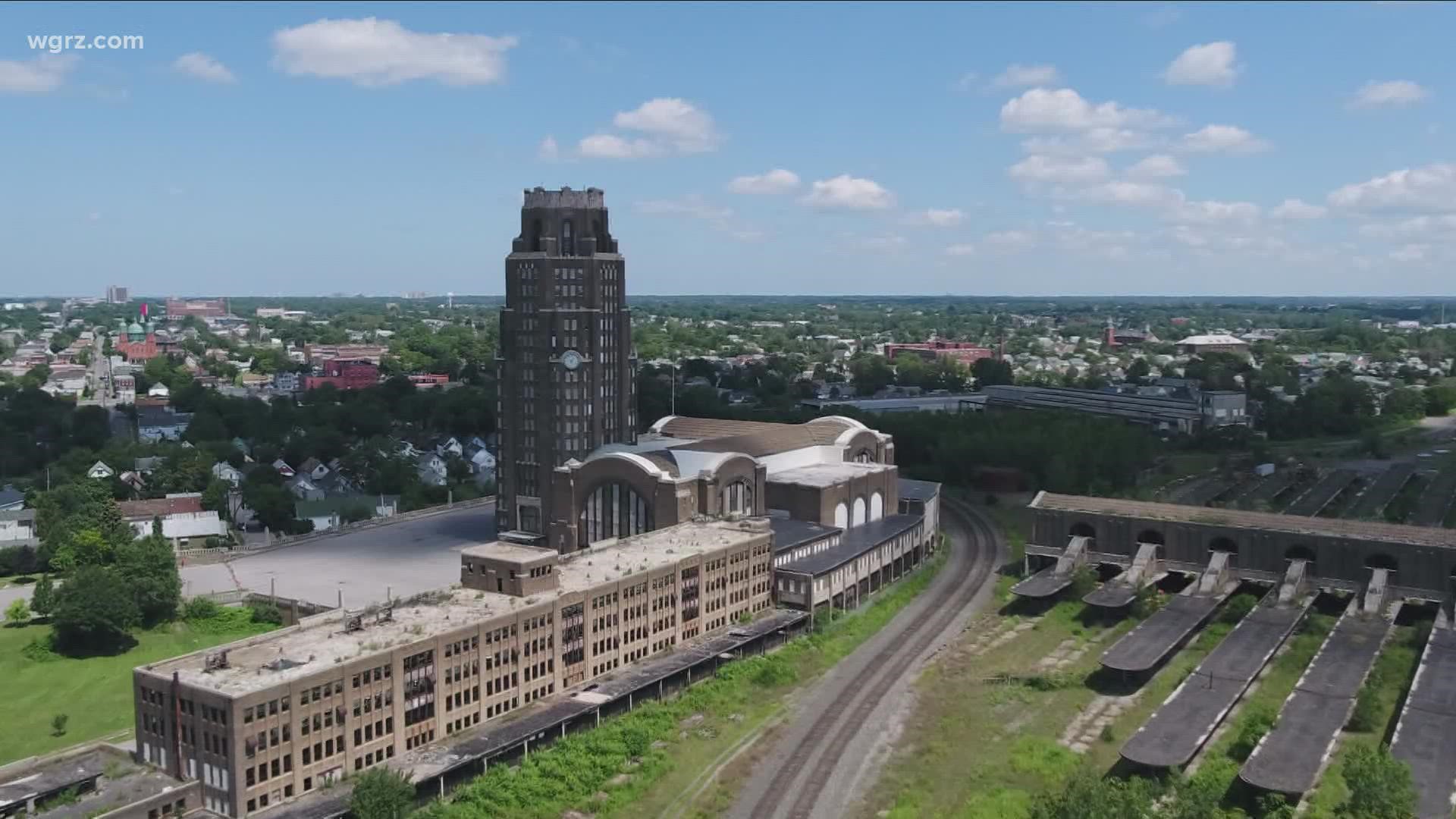BUFFALO, N.Y. — Over the past decade or so we have seen seemingly impossible projects finally take shape here in the Queen City, from the Darwin Martin House, to the Richardson-Olmsted Campus, to waterfront development. However, one towering hurdle still stands out on our skyline, but momentum is finally building for the Central Terminal.
Since 1929, she has stood watch over Buffalo's East Side, a beacon in Polonia. But for decades, that beacon has dimmed, and its future has been foggy, even if its past was glorious.
Dave Franczyk still has fond memories of the Central Terminal.
"Everybody loves the building. It's one of the most beloved in Western New York," Franczyk said.
He remembers as a young man, dropping his father off for his weekly work trips. Even though it wasn't as busy it had once been, he loved the landmark and the bustle that still remained.
"You still had some of the businesses in there. The smoke shop, the barber shop," Franczyk said.
That is why when he became a Buffalo Common Council member and ultimately council president, he fought hard to preserve the building. Years later, he would use his office in city council to fight against a push to demolish the entire building. The fight hit a fever pitch in 1995 when $1.5 million in federal funding was earmarked for the Central Terminal's preservation, only to be sidetracked by the mayor's office to fix up Shea's.
"I was, you know, kind of fighting a lonely battle for a very long time and didn't get a lot of support in the city," Franczyk said.
Now that he is three years out of office, he is extremely encouraged by the direction that restoration efforts are headed. It is an opinion shared by his successor, Fillmore District Council Member Mitch Nowakowski.
"Things are happening here and it's on the move," Nowakowski said. "You can see it from the real estate prices, you could see it from investment, and you could start seeing it by the density of population that's now grown by almost 5,000 residents since 2010."
Nowakowski says the key to the success of the terminal turnaround is inclusivity.
"Folks in the neighborhood realized that the Central Terminal is part of their neighborhood. It's directly correlated to their neighborhood, into their housing structures, into the vitality of their own community," Nowakowski said.
Monica Pellegrino Faix, executive director of the Central Terminal Restoration Corporation says, "we're tieing our futures together. We're making a reuse here that makes sense for this building but it also makes sense for Broadway- Fillmore, for the eastside, for Buffalo."
Faix knows a thing or two about reuse of buildings many thought were beyond restoration. She came to this project after overseeing the recreation of the Richardson Olmsted Complex. She sees many of the same challenges here; addressing the decay of the structure, pulling together a plan, worked on by many parties for it's creative reuse, and instilling confidence in neighbors who have seen a parade of plans come and go. What does she see in the master plan?
"You will see people coming in to this concourse for activities and events, people spending time on the lawn, people who might live here, people who might work here. so we'll see this fusion of all different ways to use the terminal and for it to have a connection to Broadway-Fillmore," Faix said.
The plan includes using the entire campus as a year-round venue of events and activities with the main concourse as the hub. As for the physical buildings, they envision a diverse mix of uses. A cultural center, nonprofit anchor, innovation hub, residential space, film industry.
"The things I'm most excited about is that we've that we've had a trajectory of building momentum and confidence and and were there," Franczyk said. "I think we have more hope than ever this building is going to have a tremendous future. You can't replicate it, this is our pyramids. So good things are gonna happen. I think those dark days of saying just tear it down I think are over forever."
They did a lot of homework to come up with the master plan. They held three public meetings with more than 350 participants. They had more than 200 people take part in an online survey. Put together 60-person focus groups and held six sessions to discuss possibilities.
However, firm funding commitments are big questions with the total estimated restoration as $275 or nearly $300 million to be funded through public initiatives that will open the door to private development to carry out the bulk of the investment.
RELATED VIDEO:

